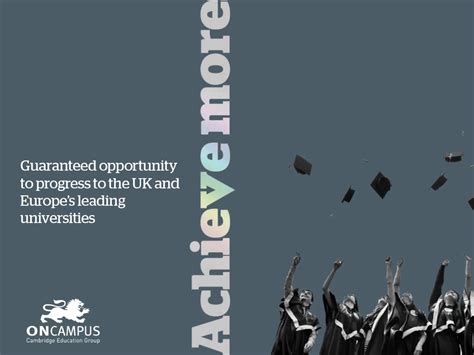Embarking on a graduate program is a pivotal step in your academic and professional trajectory. While many programs demand rigorous entry requirements, there are numerous graduate programs that embrace a more accessible admissions process, making them ideal entry points for your higher education pursuits. To assist you in your quest for the most accessible graduate programs, we’ve meticulously compiled a comprehensive list of those that typically boast the least demanding entry criteria.

Social Work
Estimated graduate acceptance rate: 50-60%
Social work programs prepare graduates to address complex social issues and provide support to vulnerable populations. The field is experiencing a growing demand for qualified professionals, and many programs recognize this need by offering accessible admission standards.
Education
Estimated graduate acceptance rate: 55-65%
Education programs equip students with the skills and knowledge necessary to excel in various educational settings. The high acceptance rates in this field reflect the critical need for well-trained educators in schools and other learning environments.
Public Health
Estimated graduate acceptance rate: 55-65%
Public health programs focus on improving the health and well-being of communities and populations. With the increasing emphasis on preventive health and health disparities, the demand for public health professionals is surging, leading to more accessible admission requirements.
Library Science
Estimated graduate acceptance rate: 60-70%
Library science programs prepare graduates for careers in libraries, information organizations, and related settings. The proliferation of digital technologies and the growing need for information literacy have contributed to the high acceptance rates in this field.
Criminal Justice
Estimated graduate acceptance rate: 65-75%
Criminal justice programs provide students with an in-depth understanding of the criminal justice system, law enforcement, and related fields. The high acceptance rates in this area align with the increasing demand for professionals in criminal justice and law enforcement agencies.
Counseling
Estimated graduate acceptance rate: 55-65%
Counseling programs train individuals to provide therapeutic support to individuals and groups facing a wide range of mental health challenges. The growing prevalence of mental health issues and the need for qualified counselors have increased the accessibility of these programs.
Secondary Education
Estimated graduate acceptance rate: 60-70%
Secondary education programs prepare teachers to work in middle and high schools. The need for certified secondary school teachers, particularly in subjects like math, science, and special education, has contributed to the relatively low entry barriers in this field.
While the graduate programs listed above are generally easier to get into, it’s crucial to avoid common mistakes that could hinder your application:
- Incomplete or inaccurate application materials: Ensure that your application is complete, all required materials are included, and the information provided is accurate and up-to-date.
- Weak personal statement: Dedicate ample time to crafting a compelling personal statement that showcases your passion, skills, and alignment with the program’s objectives.
- Insufficient research: Thoroughly research the programs you’re interested in and ensure they align with your career goals and interests.
- Lack of preparation for admission exams: If required, prepare diligently for admission exams like the GRE or GMAT. Poor scores can significantly impact your chances of admission.
- Neglecting the application deadline: Adhere to all application deadlines and submit your materials well in advance to avoid missing out.
To maximize your chances of success when applying to graduate programs, follow these steps:
- Identify your interests and goals: Determine the area of study that aligns with your aspirations and career objectives.
- Research programs: Explore various programs that offer your desired specialization and evaluate their entry requirements, curriculum, and reputation.
- Prepare your application materials: Gather all required documents, including transcripts, letters of recommendation, and a personal statement.
- Refine your application: Seek feedback on your application materials from professors, mentors, or writing centers to ensure clarity and impact.
- Submit your application: Submit your completed application well before the deadline and track its status regularly.
- Follow up: Contact the admissions office for updates or to express your continued interest in the program.
To generate ideas for future applications, consider exploring interdisciplinary programs that combine multiple fields. For example, the emerging field of neurocounseling merges neuroscience and counseling, creating innovative approaches to mental health treatment. Alternatively, the field of biostatistics combines biology, statistics, and computer science, opening up new avenues for research and analysis in healthcare.
Table 1: Estimated Graduate Acceptance Rates
| Program | Estimated Acceptance Rate |
|---|---|
| Social Work | 50-60% |
| Education | 55-65% |
| Public Health | 55-65% |
| Library Science | 60-70% |
| Criminal Justice | 65-75% |
| Counseling | 55-65% |
| Secondary Education | 60-70% |
Table 2: Common Mistakes to Avoid
| Mistake | Consequence |
|---|---|
| Incomplete/inaccurate application | Reduced chances of admission |
| Weak personal statement | Negative impression on admissions committee |
| Insufficient research | Applying to unsuitable programs |
| Lack of preparation for admission exams | Low scores can hinder admission |
| Neglecting application deadline | Missing out on program consideration |
Table 3: Step-by-Step Application Approach
| Step | Action |
|---|---|
| 1 | Identify interests and goals |
| 2 | Research programs |
| 3 | Prepare application materials |
| 4 | Refine your application |
| 5 | Submit your application |
| 6 | Follow up |
Table 4: Creative Thinking for Future Applications
| Field | Interdisciplinary Combination | Career Opportunities |
|---|---|---|
| Neurocounseling | Neuroscience + Counseling | Innovative mental health treatment |
| Biostatistics | Biology + Statistics + Computer Science | Healthcare research and analysis |
